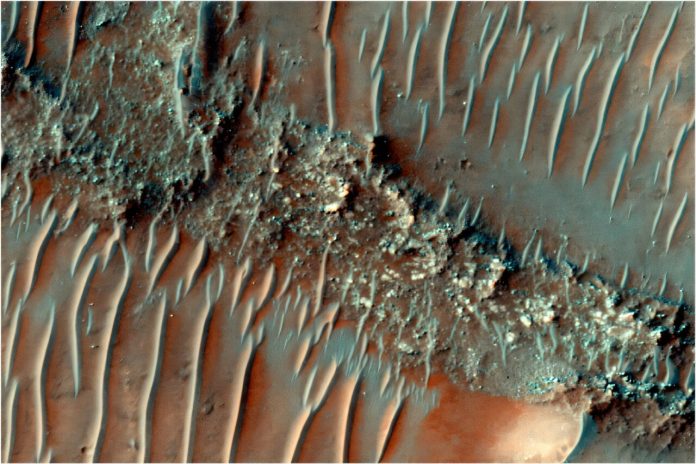
New research has uncovered more than 15,000 kilometers of ancient riverbeds on Mars, suggesting that the Red Planet may have once been much wetter than scientists previously believed.
These findings add an exciting new chapter to our understanding of Mars’ past, indicating it may have supported stable, flowing water for long periods.
The study focused on a region called Noachis Terra, located in Mars’ southern highlands.
This area hasn’t been studied as closely as other parts of the planet because it lacks the familiar valley networks—branching channels—that have traditionally shown evidence of ancient rainfall.
But this new research took a different approach by examining fluvial sinuous ridges. These ridges, also known as inverted channels, are believed to have formed when rivers deposited sediment that later hardened.
Over time, wind and erosion wore away the softer surrounding ground, leaving the harder riverbeds standing above the landscape.
The research, led by Adam Losekoot, a Ph.D. student at the Open University, is being presented at the Royal Astronomical Society’s National Astronomy Meeting 2025. Losekoot and his team used images and data collected by three Mars orbiters—NASA’s Context Camera (CTX), the Mars Orbiter Laser Altimeter (MOLA), and the High Resolution Imaging Science Experiment (HiRISE).
These tools allowed them to map the ridges in detail, revealing their size, shape, and how far they stretched across the region.
Some ridges appear as short, isolated segments, while others form extensive networks stretching hundreds of kilometers.
Many stand several meters tall, and their curves and paths resemble those of meandering rivers on Earth. Their presence across such a wide area suggests that these features didn’t form during brief wet periods, but over longer spans of time when surface water was stable and flowing.
The most likely explanation for the water that formed these ancient rivers is precipitation, meaning rain or snowfall. This challenges the long-held theory that Mars was mostly cold and dry, with only short bursts of warmth melting underground ice.
Instead, this new evidence points to a Mars that may have once had a more Earth-like climate in some regions, at least temporarily.
Losekoot calls Noachis Terra a “time capsule” because it has remained relatively unchanged for billions of years, preserving clues about Mars’ ancient climate.
The findings suggest that Mars was once a much more active and complex planet than the frozen desert we see today. They also raise exciting new questions about whether Mars may have once been habitable.
Source: Royal Astronomical Society.



